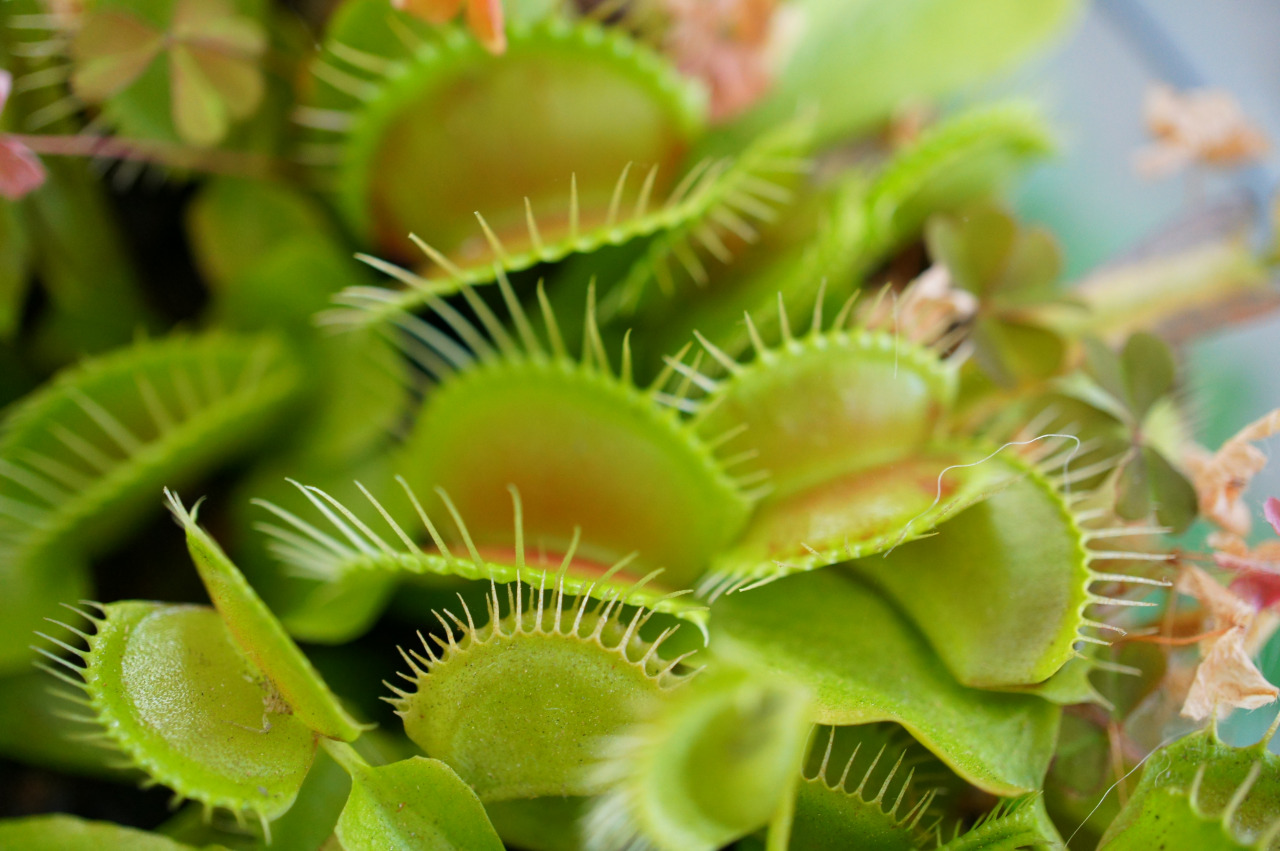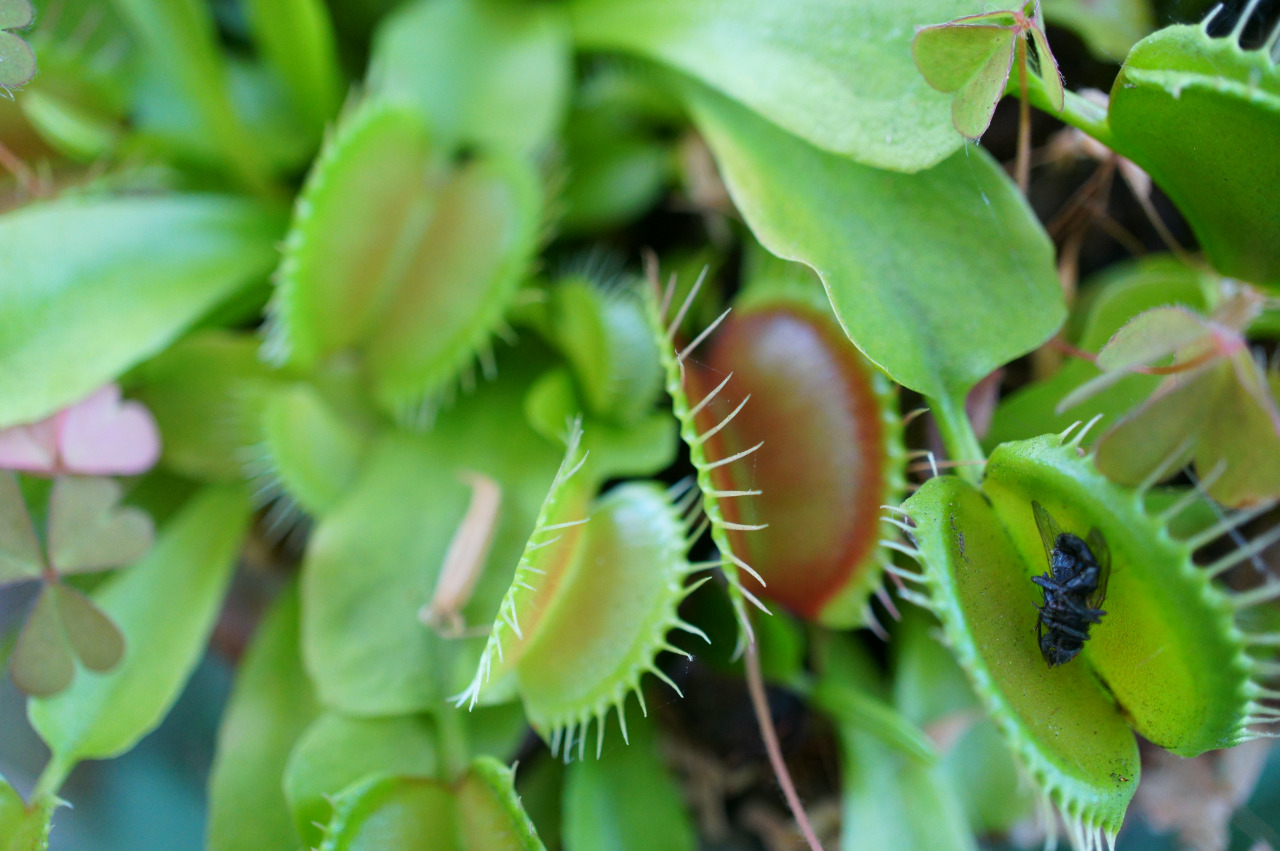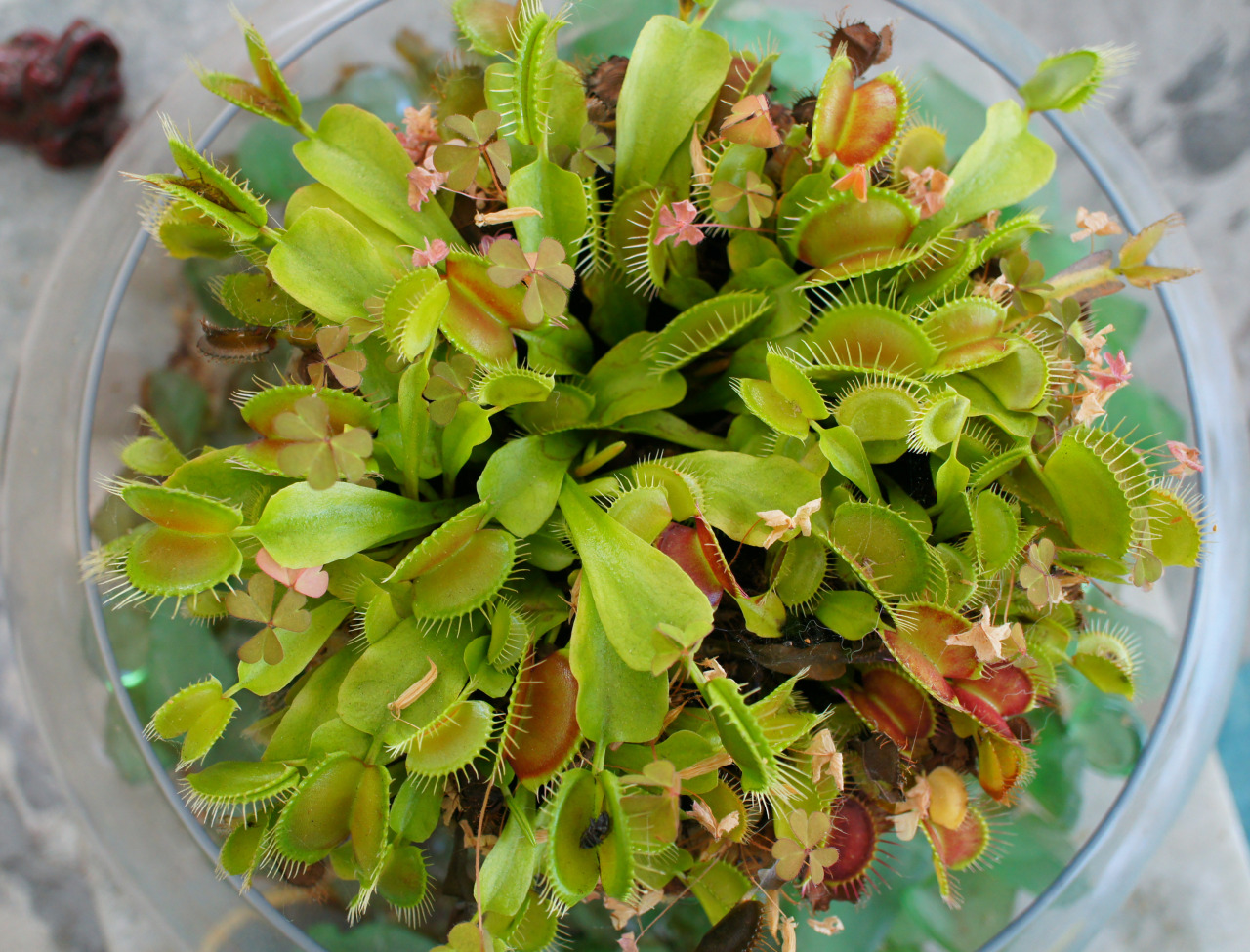Comments Off on



How to keep your venus fly trap happy (and alive) – by flora-file
After my post about cutting the flower buds off when a venus fly trap flowers, I got some questions about how to care for this plant, and specifically people asked how I could possibly keep one alive for ten years. Just follow these handy dandy tips to keep your venus fly trap chomping small invertebrates for years to come.
- Sunlight – Unfortunately this plant is not a houseplant. It needs direct sun to survive, hopefully about 8 hours a day. Mine lives on my patio and gets a few hours of direct light in the morning, and then bright indirect light (which is different than shade) for the rest of the day, and it seems to do fine. Plants that don’t get enough light tend to have elongated leaves, stretched out by the plants hopeless attempt to grow toward some source of light. Happy plants have short leaves and lots of traps. They still need light to photosynthesize no matter how many flies or spiders you feed them.
- Distilled or Purified Water – These plants are very sensitive to minerals dissolved in water, especially the fluoride and chloride found in most tap water. Not even spring water is okay, as it contains trace minerals that may be detrimental to the health of the plant. Rainwater will probably work, as long as you don’t live next to a coal burning power plant or some other source of gross air pollution. This may be the most common form of venus fly trap neglect, as people that have killed their fly trap have usually not followed this important rule.
- Peat Moss or Coco Coir substrate – The venus fly trap is a bog plant that naturally grows in mucky, nitrogen deprived soil. The whole bug eating behavior arose from the need for additional nitrogen that was severely lacking in the soil. Both peat moss and coco coir have extremely low nitrogen content, making them suitable for the needs of this plant. I used coco coir when I repotted mine a couple years ago, and it worked great. Coco coir is much cheaper than peat moss, and also a better choice environmentally.
- A steady diet of…nothing! – Don’t give it fertilizers or chemicals, no Dr Shultz or Miracle Grow. And don’t feed it hamburger either, that’s just wrong. If it is healthy it will catch bugs all by itself, almost like its evolved to catch bugs or something. Keep the substrate constantly moist. I keep mine in a container that doesn’t drain and keep it in standing water constantly. Whatever happens, don’t let it dry out.
If you follow these simple steps your fly trap should grow old of the bulb and long in the tooth. I’m not saying this is the only way to take care of your fly trap, but its how I take care of mine. And after 10 years its still working. Good luck, and garden on!